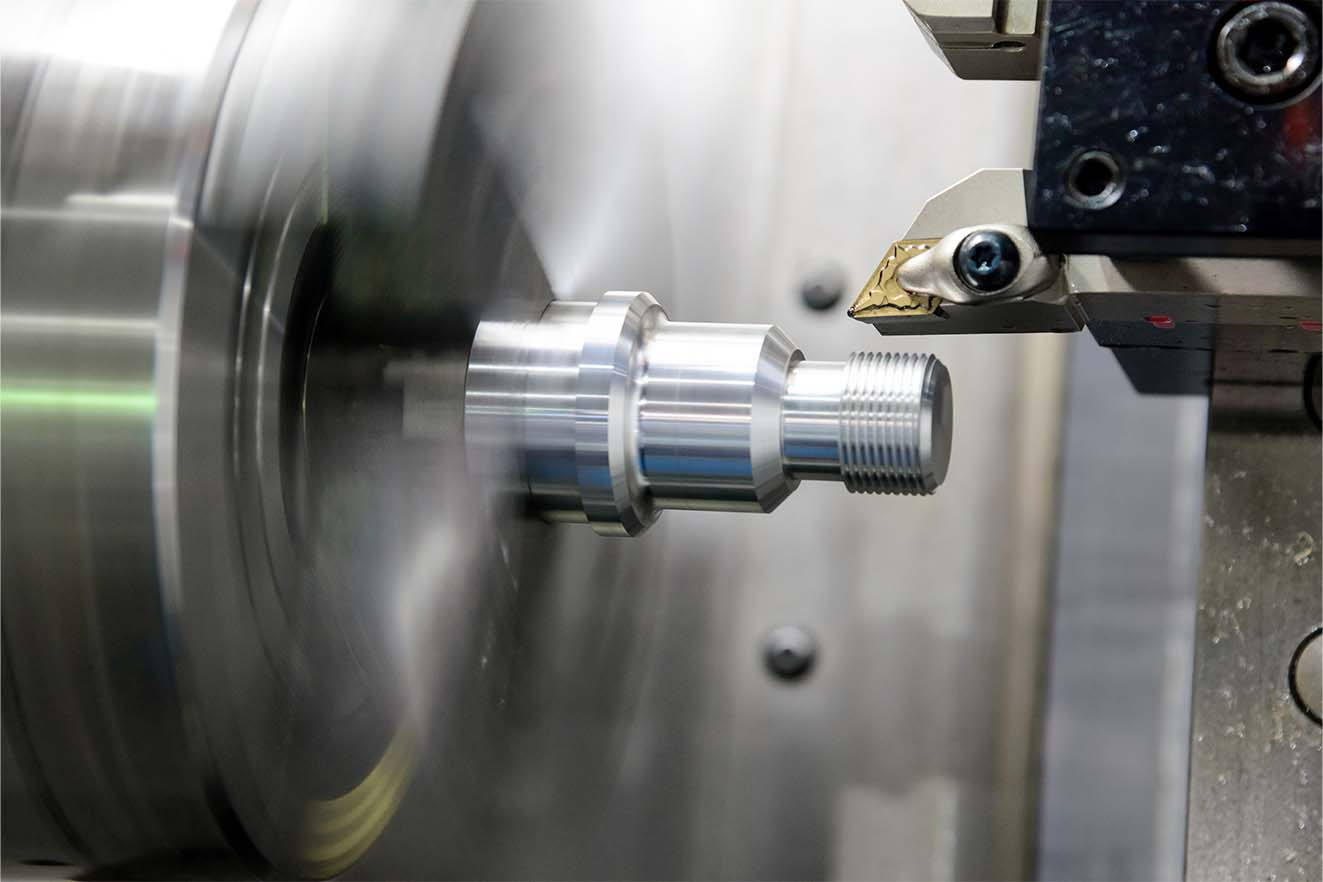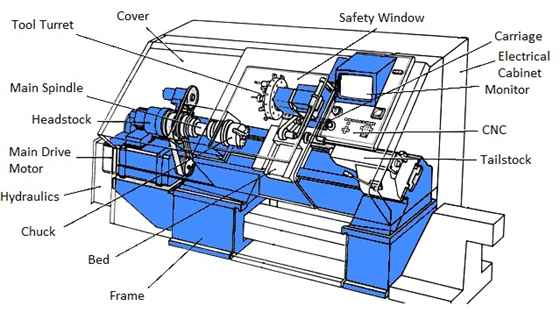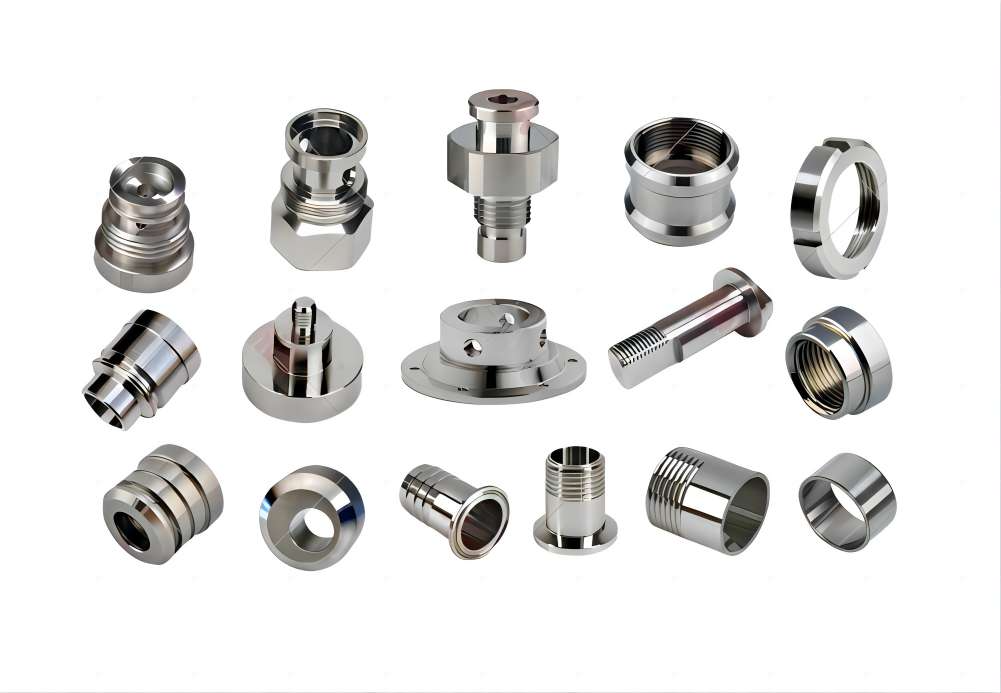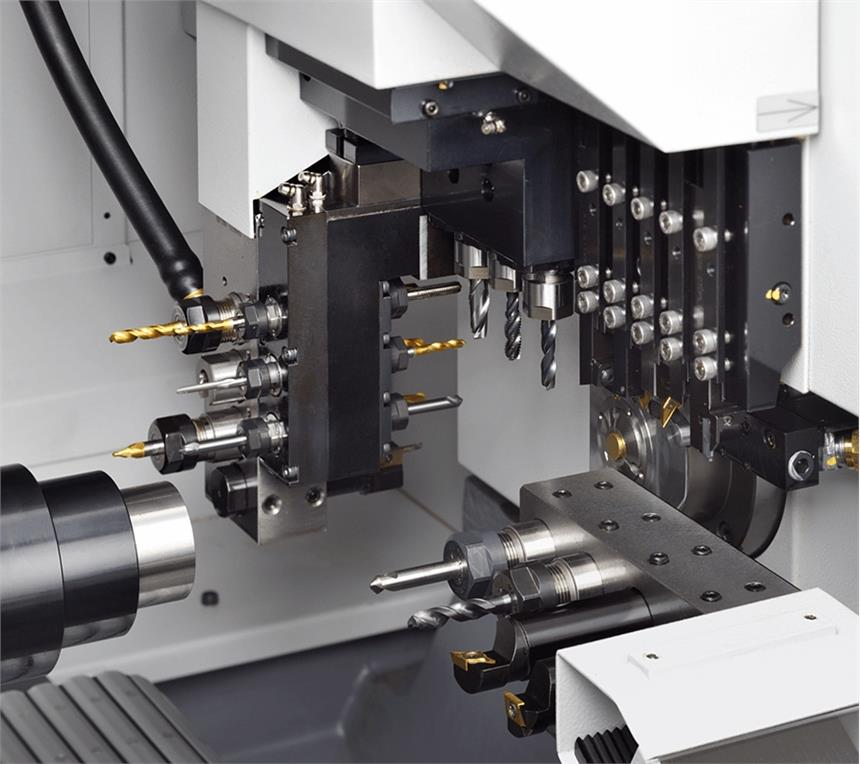Discover the precision of CNC turning machining. Learn how turning services deliver high-accuracy parts for industries like security, medical, energy, and home appliances with proven real-world results.

Turning machining is one of the most fundamental yet advanced processes in modern metalworking. It shapes materials by rotating a workpiece against a cutting tool, producing accurate cylindrical components. With the rise of CNC (Computer Numerical Control), turning has evolved into a process that combines efficiency, repeatability, and precision making it essential for industries that demand consistency at scale.
CNC turning is the digital upgrade of traditional lathes. Instead of relying on manual operation, software programs guide the cutting tool’s movements with exceptional accuracy, making CNC turning machining one of the most reliable methods for producing high-precision cylindrical parts.
This process ensures precision parts are consistently manufactured to meet the most demanding requirements.
For industries that rely on accuracy and speed, CNC turning machining offers clear advantages:
Turning machining is available in several configurations, each designed to meet different production requirements. Choosing the right machine is critical for achieving precision, efficiency, and cost-effectiveness in modern turning services.
These are ideal for producing very small and intricate CNC turned parts such as medical implants, lock components, and precision pins. Swiss-type CNC turning provides superior accuracy, often used in industries where tolerances in microns are required.
The most common type of CNC turning machine, horizontal lathes are highly versatile. They are widely used in CNC lathe services for manufacturing shafts, spindles, and fittings in medium to large volumes.
Best suited for heavy or large workpieces, vertical CNC turning machines handle components like motor housings and aerospace parts. This setup allows gravity to stabilize the workpiece, improving accuracy and safety.
These advanced machines combine CNC turning and milling capabilities, enabling the production of complex geometries in a single setup. They are essential for high-precision CNC turning services where efficiency and accuracy are equally important.
CNC turning services adapt to these materials to produce high-accuracy components across multiple industries. Discover advanced methods and applications in Aluminum component manufacturing through our article.
CNC turning machines consist of several core components that work together to achieve precision, consistency, and efficiency. Each part of the lathe plays a unique role in delivering high-quality CNC turning services, accurate CNC turned parts, and reliable turning machining results.
The foundation of the lathe that supports all other components. A rigid and stable bed is essential for maintaining accuracy in CNC turning operations.
Located at one end of the lathe, the headstock houses the spindle and motor. It provides the rotational power required to turn the workpiece during machining.
Positioned opposite the headstock, the tailstock supports longer workpieces. It prevents bending and vibration, ensuring that CNC turned parts remain accurate and stable.
This component moves the cutting tool along the lathe bed. It enables both longitudinal and cross movements, making it possible to shape the workpiece with precision.
The chuck holds the workpiece firmly in place while it rotates. Different chuck designs are used depending on the size and shape of the part being machined.
Mounted on the carriage, the tool post secures and positions the cutting tools. It allows for quick tool changes and adjustments, ensuring efficient turning services.
By combining these components, CNC turning machines deliver high-performance turning machining, producing reliable CNC turned parts across industries such as security, medical, aerospace, and energy.

CNC turning works by rotating a workpiece on a spindle while a cutting tool removes material to create the desired shape. Unlike manual lathes, CNC turning machines are controlled by computer programs that guide every movement with exceptional accuracy. This automation allows turning services to produce high-precision cylindrical parts consistently and efficiently.
The process begins with loading the raw material into the chuck of the CNC lathe. Once secured, the spindle rotates the workpiece at high speed while the cutting tool mounted on the tool post moves along the surface to remove excess material. Advanced CNC turning machines can perform multi-axis movements, enabling the production of complex geometries in a single setup.
CNC turning services are widely used to create CNC turned parts such as shafts, pins, valves, and medical components. By combining advanced software with precise tooling and in-process inspection, turning machining ensures that every part meets strict tolerance and quality requirements.
Learn more about durability and precision in custom stainless steel sheet fabrication in our dedicated guide.
CNC turning services involve a variety of operations, each designed to create specific shapes, surfaces, and features on CNC turned parts. By combining these operations, manufacturers can achieve precise dimensions and high-quality finishes.
Facing is one of the most common CNC turning operations. In this process, the cutting tool moves across the end of the workpiece to create a smooth, flat surface that is perfectly perpendicular to the axis of rotation. This step is essential in preparing the material for further CNC turning processes, ensuring accuracy in length and alignment. Facing is frequently used in CNC turning services to prepare shafts, spindles, and fittings for high-precision applications.
Straight turning reduces the diameter of a workpiece along its entire length. Using advanced CNC turning machines, manufacturers can achieve consistent dimensions and excellent surface finishes. This operation is critical when producing CNC turned parts such as pins, rods, and connectors that demand tight tolerances. By relying on modern CNC lathe services, clients receive uniform and repeatable results, even in large production runs.
Taper turning produces conical shapes by gradually decreasing the diameter of the workpiece over a certain length. This is particularly useful for CNC turned parts like fittings, nozzles, and connectors where angled geometries are required. CNC turning services employ multi-axis CNC turning machines to create precise tapers efficiently. Industries such as aerospace, medical, and energy often rely on this operation to achieve custom angles that guarantee performance and reliability.
Grooving involves cutting narrow channels or recesses into the surface of the workpiece. These grooves are commonly required in CNC turned parts for O-rings, seals, and other assembly functions. With high-accuracy CNC turning machines, grooving can be performed at exact depths and widths, ensuring perfect functionality. Professional CNC lathe services and advanced turning machining techniques use precision tooling and in-process inspection to guarantee the grooves meet the most demanding specifications.
Parting, also called cut-off, is the operation used to separate a finished CNC turned part from the raw material. Precision parting ensures minimal waste and accurate dimensions for each component. Modern CNC turning machines are capable of performing parting operations quickly and efficiently, making them ideal for high-volume CNC turning service requirements. This operation is critical in industries such as security and medical, where uniformity and consistency are non-negotiable.
Thread cutting is one of the most valuable operations in CNC turning. It creates internal and external threads on bolts, shafts, and fasteners. Using state-of-the-art CNC lathe services, manufacturers achieve precise thread dimensions that ensure compatibility in assemblies. High-precision thread cutting is essential for CNC turned parts used in aerospace, energy, and home appliance sectors, where reliable fastening is crucial for safety and performance.
Boring enlarges or refines an existing hole in a workpiece. This CNC turning service is vital when components require exact hole diameters with high surface quality. CNC turning machines equipped with advanced boring tools are capable of producing accurate, consistent results even in demanding materials such as stainless steel and titanium. Industries such as energy, water systems, and aerospace rely heavily on boring operations to meet strict international standards.
Knurling creates a patterned texture on the outer surface of a component. This operation improves grip and adds functional or aesthetic value to CNC turned parts. CNC turning services use knurling in the production of appliance handles, tools, and custom industrial components. With precision CNC turning machines and advanced turning machining techniques, manufacturers can apply uniform knurling patterns, ensuring both functionality and design requirements are met.
One of the most important advantages of CNC turning services is the ability to achieve extremely tight tolerances. Modern CNC turning machines can deliver parts with accuracy measured in microns, ensuring that every component performs exactly as designed. This level of precision is critical for industries such as security, medical, and aerospace, where even the smallest error can lead to system failure.
CNC turned parts are manufactured according to strict tolerances that guarantee dimensional accuracy, surface quality, and reliability. For example, shafts, pins, lock parts, and medical implants produced through CNC lathe services often require tolerances as tight as ±0.005 mm. By maintaining this consistency, turning machining services help manufacturers reduce rejection rates and improve overall product performance.
In addition to tolerances, CNC turning service providers must follow international standards such as ISO, DIN, ASME, and ANSI. These standards ensure that CNC turned parts are compatible with global manufacturing systems and meet industry-specific safety requirements. Compliance with these standards builds trust and allows clients to confidently use CNC lathe services for both prototypes and large-scale production.
Explore design and production insights from our article on truck chassis manufacturers.
CNC turning machining supports a wide range of industries and everyday products:

Discover how custom CNC machining delivers accuracy and flexibility in modern manufacturing in our resource.
The cost of CNC turning services is mainly influenced by several factors. Material selection plays a key role, as harder or specialized metals increase both machining time and tool wear compared to easier-to-machine materials like aluminum. Part complexity also affects pricing — simple shapes are cheaper, while intricate CNC turned parts with tight tolerances or high surface finish requirements naturally raise costs.
Other important factors include production volume, where bulk orders reduce the unit cost, and additional services such as heat treatment, coating, or certification, which add to the final price. Lead time also matters; urgent CNC turning service requests usually come at a premium. By understanding these elements, manufacturers can optimize their turning services while ensuring high-quality results from CNC turning machines. To get an accurate quote for your CNC turning project, you can sign up on Entag and request a tailored service based on your materials, tolerances, and volume needs.
The Challenge:
A leading manufacturer of high-security locks required a new set of internal pins and cylinders with extremely tight tolerances (±0.005 mm). Their previous supplier struggled with batch consistency, leading to high rejection rates and compromised security mechanisms.
Our Solution:
We utilized Swiss-type CNC turning, a process designed for small, intricate parts. By combining this technology with hardened steel alloys and a multi-stage quality control process, including in-process digital measurement, we ensured every component was identical.
The Result:
We delivered over 50,000 units with a rejection rate of less than 0.1%. The client reported a 40% increase in reliability of their final lock assembly and was able to launch their new product line two months ahead of schedule.

CNC turning is precise, but manufacturers often face challenges. Here’s how we solve them:
Q1: What’s the difference between CNC turning and CNC milling?
Turning rotates the workpiece while cutting tools shape it ideal for cylindrical parts. Milling rotates the cutting tool while the workpiece stays fixed, ideal for prismatic parts.
Q2: Can CNC turning handle very small components?
Yes. Swiss-type CNC turning is designed for miniature, intricate parts like medical implants and lock mechanisms.
Q3: Which materials are best suited for CNC turning?
Stainless steel, brass, aluminum, titanium, and engineered plastics are commonly used depending on strength and corrosion requirements.
Q4: How do I choose the right CNC turning service?
Look for advanced equipment, strict inspection standards, and proven experience in your industry.
Q5: Which industries rely most on CNC turning?
Security, medical, energy & water, home appliances, and aerospace are among the top sectors.
High-accuracy CNC turning machining has become a cornerstone of modern manufacturing. From precision lock components to medical implants and brass inserts for energy systems, its versatility is unmatched. The key lies not just in the technology, but in choosing partners who combine advanced CNC turning machines with proven expertise and inspection processes.